Review: Red Hydrogen One
Oct 29, 2018, 7:00 AM by Eric M. Zeman
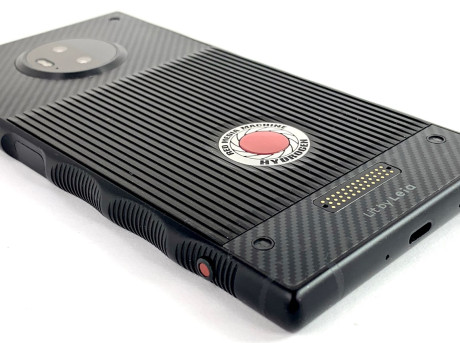
Red announced its "holographic 4-view" phone more than a year ago. After several delays, it is finally ready for prime time. The Hydrogen One boasts the first 3D display we've seen in years, as well as the ability to take 3D photos and videos. If you're longing for more depth from your Android phone, not to mention a unique industrial design, the Hydrogen One has beamed in from another dimension. Here is Phone Scoop's in-depth review.
Hardware
Is It Your Type?
The Hydrogen One from Red is somehow looking backward and forward at the same time. This unique device lets people capture and view 3D content without special glasses. It's for those with cash to burn who are seeking something way, way off the beaten path.
Body
Red is a camera company. It's most well known for making digital cinema cameras — the kind used to film movies like The Hobbit. Since most people now use their phone for photography, the best way for Red to get its camera tech into ordinary people's hands was to put it in a phone. And thus we have the Red Hydrogen One.
Red's marketing materials make clear that it prides itself on design. The Hydrogen One certainly has a design: I'd call it Industrial-to-the-Maxism. It's hard to know if I'm supposed to even take this thing seriously. It's brobdingnagian, it's brutal, it's bizarre.
The phone is a massive black slab. I know I put those three words together from time to time, but the Hydrogen One is one of the most massive black slabs I've encountered. I feel like the size is part of the point the designers were trying to make. It's also chaotic. There are different materials, colors, panels, and textures smashed together in a way that hardly makes sense.
The aspect that stands out the most to me is grip-like metal frame. A beefy metal chassis runs along the outer edges of the phone. You'll see several obvious raised ridges on each side that resemble those you'd see on a pistol grip. Sawtooth notches fill the space between the ridges, allowing you to grab hold of the Hydrogen One tightly. It reminds me of the grip on the handlebars of a motorcycle or bicycle. The ridges give the phone a unique, wavy profile.
Red fitted a glass panel on front, with plastic inserts at the top and bottom. The rear is formed by a combo of tough kevlar that has a diagonal pattern, and a metal plate with vertical grooves. The look is jarring.
The Hydrogen One measures 6.54 inches by 3.28 inches, making it taller and wider than even the largest phones out there today. It's also a full 10mm thick. Thanks to the sturdy metal frame and other components, the Hydrogen One weighs 9.63 ounces, or more than half a pound. It's impossible to use this device with a single hand; you need both. Just looking at the phone's measurements on paper tells me it is big, but nothing quite prepares you for the experience of holding for the first time. Everything about it is awkward. People with small hands will likely not enjoy using the One. The phone barely fits into pockets and — thanks to its square corners — it's not comfortable to carry around on your person at all. The Hydrogen One needs to find a home in a backpack, satchel, or other bag.
Profile
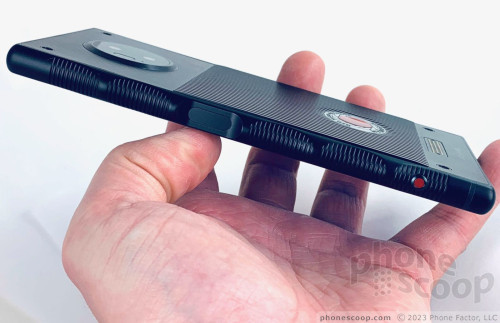
I don't think you'll find a stronger metal frame on a modern phone. Ten millimeters of aluminum running all the way around the edges gives the One a tank-like appearance and feel. Red makes no specific claims as to the phone's toughness. There is no mil-spec rating and no IP rating for this device. That means it is not impervious to damage. Even so, I'd be stunned if it took any damage in an everyday, accidental drop.
As for fit and finish, this phone is nearly flawless. You'll find tight seems between the three flat pieces that make up the front surface, each of which is set into the frame snugly. The three pieces that form the rear are assembled tightly, too. As much as I like the kevlar on the back panel, I can't understand the ridged metal plate. Running your fingers along the ridges make it sound as though the phone is hollow inside. I would have preferred to see the entire rear panel made of kevlar.
Red first announced the Hydrogen One in the summer of 2017, so I suppose we can forgive its use of the (now) antiquated 16:9 screen shape. Sort of like the Razer Phone, the Hydrogen's glass is set between an obvious plastic forehead and plastic chin. Four indented circles in the forehead signify the twin selfie cameras (on the left), large indicator light, and sensor. They are separated by a Morse Code-like grille for the earpiece. The chin holds two more grilles and Red's logo etched into the plastic. It's a busy face.
The volume toggles are embedded in the grip-like left edge as if they were triggers. Each is made of plastic and settled into its own groove between the ridges. Visually, they're easy to miss, though the smooth texture of each lets your fingers know where the buttons are. Travel and feedback is a bit tight.
Triggers
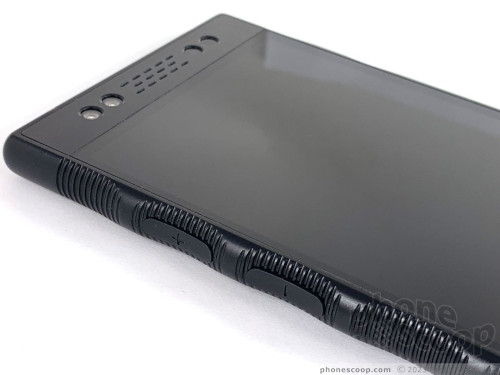
Red went with a side-mounted fingerprint reader on the Hydrogen One, and it doubles as the screen lock / power button. It's more or less centered on the right edge and set deep between the ridges. I found it easy to locate and use, and the button delivers good action. A small, red button at the very bottom of the right side is dedicated to the camera. A long press of this key opens the camera while a short press fires the shutter. This is a two-stage key, but it's very springy with too much travel. I don't like the feedback at all. You have to be really careful to not overpress and bypass the first (focusing) stage.
Fingerprint Reader
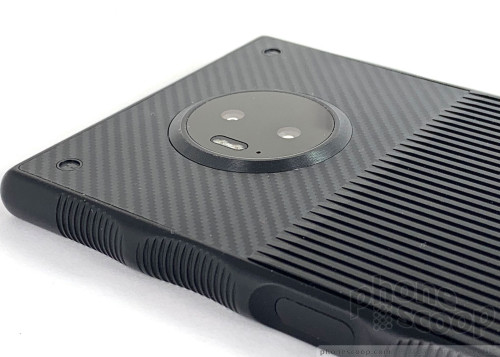
The phone's top edge holds the SIM/memory card tray and 3.5mm headphone jack. I like that you can pull the tray out with a fingernail. The USB-C port, used for charging, is positioned on the bottom edge.
Apart from the kevlar and metal plate, three other items stand out on the rear panel: the gold accessory connector, the large Red logo badge, and the huge camera module. The accessory connector will allow the phone to hook up with future add-ons from Red. Red has said very little about these potential modules other than that there will be a camera module (with interchangeable lenses), a memory expansion module, and a battery pack module. The mock ups on Red's web site are little more than pencil drawings. These are due to arrive in 2019. I'm not entirely convinced they'll ever materialize.
The Red logo badge on the back might look like a button; it's not. The circular camera module is enormous. It holds two camera lenses, the dual-LED flash, and sensors. You can't open up the back to access the battery.
Red Logo
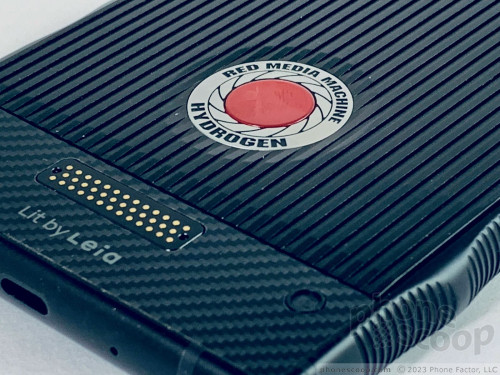
The Red Hydrogen One is one of the most unique phones of 2018, of that there's no doubt.
Screen
One of the Hydrogen One's selling points is the 3D (what it calls "holographic 4-view") display, but we're going to talk about that later. In this section, we'll evaluate how the screen works in everyday 2D mode.
The display measures 5.7 inches across the diagonal with quad HD resolution (2,560 by 1,440 pixels). The One's screen is smaller than the ~2:1 screens found in most competing flagships, but still has a very healthy pixel density of 515ppi. Everything on the screen is razor sharp. There are no individual pixels to see anywhere at all. The LCD panel pushes out lots of light. I was very pleased with high-def content from YouTube and Netflix, which looked amazing. Viewing angles are very good, with minimal brightness loss and no blue shift. Colors appear to be accurate. The One has a really good regular screen.
Advanced display controls are, believe it or not, somewhat limited. You can manage brightness and the night light feature, as well as font and icon size, but there's no way to control the color profiles.
Signal
AT&T and Verizon are selling the Hydrogen One, which supports both carriers' LTE 4G networks. Our review unit is operating on AT&T and it did well. I was able to take it for a spin around New Jersey and found it easily connected to AT&T's network and maintained that connection no matter where I took the phone. The One connected calls on the first or second dial, and didn't drop any calls despite traveling miles on the highway.
The phone suffices for everyday use. The Hydrogen One streamed content from YouTube and Spotify over the mobile network with little or no buffering. Playback was generally smooth and free from blips. The One is more than adequate for posting content to Instagram, Facebook, and Twitter.
Sound
The Hydrogen One is a solid voice phone. The earpiece delivers plenty of sound, allowing you to hold calls in most places without issue. I had no trouble hearing calls in a noisy gym, in the car, or outdoors in the wind. Calls could be a little bit clearer. The earpiece is prone to some distortion, particularly if you push the volume to the max. People I spoke to through the One said I sounded fine.
The speakerphone also packs some punch. The boomy space inside the chin creates lots of volume and it travels well in places such as an office, living room, or moving car. Quality is on par with standard earpiece calls, which is to say calls are mostly clear save for the occasional blip.
Ringers and alerts are very loud, and the vibrate alert does a fine job.
Red says the Hydrogen One includes proprietary A3D Sound. The algorithm from Red purports to take stereo content and transform it into a 3D sound field that "surrounds and stuns the senses." Um, not quite.
The One's built-in speakers pump out plenty of sound, but I didn't care for it at all. The sound field is widened so much it sounds as if the music or video track is coming from behind the phone. Moreover, the speakers produce a boomy sound with far too much delay. Honestly, the effect is pretty bad.
You can turn off A3D, but doing so has little impact. It narrows the sound stage some, but retains the boomy, delayed playback that just isn't what I want.
The experience via headphones is a bit better. You'll get the wide soundstage and reverb-like delay, but the annoying boominess is gone. I think the delay is still overused in the mix.
Battery
If the Hydrogen One excels at anything, it's battery life. The phone packs a 4,500mAh battery, which is among the largest available from any phone in the market today. If you're going to use the One as a normal Android phone, you'll find it blasts through 1.5 days with ease. If you use the phone lightly, it may even make it 2 days before you need to recharge. I had a hard time killing the battery.
Messing with the 3D content and creation tools on the phone will have an impact, though not as much as you might fear. I spent plenty of time viewing 3D photos and videos, surfing for and playing 3D games, and of course using the camera to capture 3D photos. Tossing in several hours of this type of activity dropped battery life from 1.5 days to 1. That's hardly anything to complain about.
The phone includes only Google's basic Android battery saver app.
Red says the phone supports rapid charging, but the high-capacity power cell needs more time than a smaller battery would to fill up completely. You can bank on at least two hours of charging time, if not more, when the battery is fully depleted.
Bluetooth, GPS, NFC, WiFi
The One contains a standard set of secondary radios and they all lived up to expectations.
Red went with Bluetooth 5.0. The phone didn't give me any trouble when I paired it with my car, headphones, or speakers. The connection remained tight no matter the accessory. Calls via my car's hands-free system sounded very good, while music sent to headphones was decent (the One's A3D processing doesn't apply to Bluetooth).
There's an NFC radio buried under the kevlar on back. It supports Google Pay and can help with pairing to some Bluetooth accessories.
The GPS radio worked flawlessly. It located me quickly and precisely, and served well for point-to-point navigation.
An FM radio is aboard for those of you who enjoy local stations
I'm glad Red opted for a dual-band WiFi radio with 2x2 MIMO. The WiFi was particularly fast.
Software
Lock Screen
Believe it or not, the Hydrogen One runs a pretty clean version of Android. That means the lock screen is somewhat basic. You'll find no "ambient display", meaning the screen doesn't light up with notifications or always show the clock. Instead, you'll need to check the notification LED above the screen, which is large and glows brightly when there are new messages or missed calls.
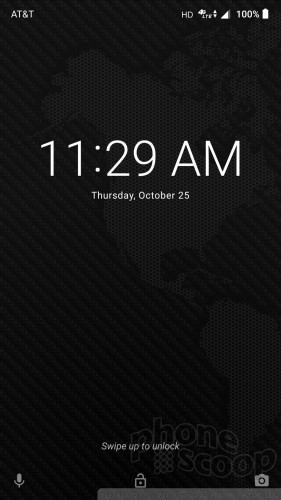
There are no gestures or actions to wake the screen other than pressing the screen lock button. A quick press turns the display on and shows the clock in blocky white text near the top with notifications lined up below. You can control how much notifications reveal, as well as dismiss or interact with them. A shortcut to voice search is in the bottom left, and a shortcut to the camera in the bottom right. These cannot be changed.
Red did a good job with the fingerprint reader. The screen lock button doubles as the reader and it's easy to find and use with your right thumb or left forefinger. The software for training prints is straightforward. I was able to set up multiple prints in under a minute. I had good success with the reader, which was fast and accurate while I reviewed the phone.
Backup security methods include pattern, PIN, password, and Google's Smart Lock options. Buried in there you'll find a face-recognition option, but it isn't fast, isn't secure, and isn't recommended.
Home Screens
The Android 8.1 Oreo build is very close to stock and works well. The home screen panels are preloaded with some apps and shortcuts, but are fully customizable. The One includes your Google Feed as the left-most screen, though you can turn this off if you wish.
The app drawer is an upward swipe away. You won't find advanced controls here. All your apps are laid out in alphabetical order; there are no folders, and no way to sort your apps other than the search bar at the top.
Red didn't mess with the Quick Settings shade or settings menus. Anyone who's used an Android phone in the last few years will find them familiar and simple to manage.
There are many ways to tweak the experience to make the Hydrogen One yours. Red allows you to select from lots of different grid sizes for the app drawer and home screens, place widgets all over the place, select from a handful of screen transitions, as well as opt from a number of different "styles" (themes) that change icon shapes, wallpapers, and such when selected.
Owing again to when the phone was first announced, the Hydrogen One is based on the Snapdragon 835 — Qualcomm's premiere processor for 2017 — with 6 GB of RAM and either 128 GB or 256 GB of storage. Most of today's flagships run the Snapdragon 845, and Qualcomm is nearly ready to announce the next top-end Snapdragon chip. Despite the age of the processor, I can't complain about the One's performance. It breezes through most tasks with ease.
Camera
The camera app is quite a bit of work. You can launch it with a long press of the dedicated camera button, but because the button is finicky, so is the app's launch experience. The button only works maybe half the time. This is aggravating. You're often better off using the lock screen shortcut.
The app itself looks dated, like it was ported over from Android 2.0. It has thick gray curtains to either side of the viewfinder and black-&-white buttons to interact with the various features. The controls are arranged similarly to most other camera apps. The left side features access to the flash, HDR, filters, and manual mode, while the right is where you'll find the shutter buttons, gallery access, and so on.
I appreciate that you can cycle the flash and HDR to on, auto, or off, but the manual mode is a waste. It only allows you to adjust ISO and shutter speed. The slowest shutter speed available is one-quarter of a second, so no nighttime light trails for you. Red says it will update this mode with more features after launch.
There's also a basic aperture mode signified by the shutter icon. It lets you set the focus point on the viewfinder and then sightly blurs everything else. It's not nearly as advanced, nor good, as the portrait / bokeh features found on modern flagship phones.
Pressing the "H" symbol on the left side of the screen calls up a secondary menu for the camera app. Here you can find the panorama shooting mode, adjust colors, set resolution, view a histogram, manage storage, set timers, and so on.
This is all pretty straightforward so far.
Want to take 3D / stereoscopic pictures? You can shoot 3D with both the front or rear cameras, but there's a bit of a learning curve. The rear cameras can only capture 3D when the phone is held in landscape orientation, while the selfie cameras can only capture 3D when the phone is held in portrait orientation. A symbol appears next to the shutter button to let you know when 3D shooting is actually available. It took me a few minutes to figure out why the symbol kept disappearing/reappearing. (A smarter interface would always show the 3D option, but prompt you to rotate the phone when necessary.)
I like that the One provides you a preview of the 3D image you're about to take. This really helps with composition. It's fairly easy to take 3D selfies, but the field of view is rather narrow. This means you'll have to get your friends up close. I noticed that there's a bit of zoom when taking landscape 3D shots. You may have to step back from your subject a bit to fit everything in the frame. Otherwise, the process is the same as taking a normal picture. Speaking of which, the phone saves a 2D/normal version of every 3D image you capture.
The app runs smoothly, but it could be a hair faster to snap pictures.
Photos/Video
The main camera features a pair of 12-megapixel sensors at f/1.8. The second sensor is key to the 3D and portrait features. A dual LED flash is there to help when needed.
As a regular camera, the Hydrogen One does fine. It produces sharp focus, accurate exposure, and proper white balance. There was a bit more grain than I care to see in low-light shots. I appreciate that the flash didn't totally blow things out or turn them blue. The One is solid at capturing those random moments that happen every day.
There are two selfie cameras, both with 8-megapixel sensors at f/2.0. Like the main shooter, the two sensors are needed here to create those portrait / 3D shots. I wish one of them had a wide-angle lens, but that's not the case. The selfie camera doesn't offer a flash of any type, though it offers a skin-smoothing beauty mode should you care to use it. Selfies definitely have more grain than the main camera, and pix were prone to a little under-exposure.

The One can capture video up to 4K from both the main and selfie cameras. You can choose from several different frame rates to suit your tastes or needs. Red decided to lump the slow-motion and time-lapse functions in with the video camera software. The time-lapse mode lets you make all sort of adjustments to capture and playback speeds, but the slow motion only lets you cut the speed by half. That's barely enough to have fun. The phone does a fine job recording video. It's sharp, colorful, and bright.
3D / 4-View
If we're to believe Red's marketing materials, the Hydrogen One's top feature is its 3D display and 3D camera. Red calls the phone "the world's first holographic 4-view media machine. Better than 3D without glasses." I'm not convinced Red is taking the right angle here.
First, the 3D screen: Typical 3D displays have a lenticular filter, or series of micro-lenses, in front of the LCD panel. Lenticular displays are often limited in resolution and suffer from reduced brightness. Moreover, lenticular 3D screens only work in one orientation (typically landscape.) Worse, the filter is still there when viewing normal 2D content on the screen, reducing image quality in 2D mode.
H4V
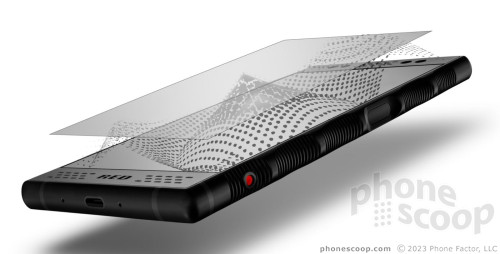
Red is using proprietary nanotechnology behind the LCD panel to "animate 4-view" footage with what Red says is a "shimmering field of light." It's called H4V. There are a couple of benefits of this tech. First, the 3D effect is visible in both landscape and portrait orientations. We've never seen that before, as it isn't possible on lenticular-style 3D screens. Second, since there are no micro-lenses in the way, the screen looks and behaves like any other quad-HD LCD screen when viewing regular content.
With that said, the Hydrogen One's 3D unique screen technology still suffers from some of the same issues as lenticular 3D screen. For example, it has a horrible "screen door" effect. The resolution of 3D content is so low that you can see pixels everywhere. It's incredibly distracting.
The 3D effect itself is somewhat exaggerated. Objects that appear in the foreground are pulled away from the background too much, leaving a gaping space in between the two. This is odd when, for example, a pumpkin sitting at the front of a table looks like it is yards closer to your eyes than a vase, which is actually just inches behind it. Also, there are lots of stray 3D artifacts that randomly pop out, like part of a shirt, or one leaf of a plant, when that portion of the image should reside in the background plane.
Further, the phone needs to be held at just such a distance, and at just such an angle in order for you to see the 3D effect. Tilting the phone around makes the 3D effect — which is hardly sharp to begin with — go into and out of focus. This makes it hard to share the 3D content with even one other person sitting next to you, let alone a larger group.
Bottom line: seven years after HTC first tried to make 3D smartphones a thing, I'm still not convinced that 1. Anyone wants this; and 2. it's worth paying extra for.
What about the content? Well, there are a handful of ways to find and consume 3D content on the Red Hydrogen One.
Want apps and games? Check out the Leia Loft. This is a Red-curated app store for H4V-compatible apps and games. At the moment, there aren't many titles lining the virtual shelves of the Leia Loft. Surely this will change over time. We'll have to give Red the benefit of the doubt and believe that the Loft will be more robust down the road.
Want video content? Check out the Hydrogen Network. Here, you can browse through channels and categories, seek out sports, movies, and documentaries, as well as see what's popular. Like the Leia Loft, there isn't too much in the Hydrogen Network just yet. Red says that Warner Bros. has committed to bringing some 55 3D feature films to the platform. (No idea of they'll be free or carr some fee.)
Then there's the Red Player. This is a content playback app. Any 3D/H4V pictures, movies, or downloads all show up here. Basically, the stuff you capture with the Hydrogen One lands here, though there are some preloaded sample shots too. The UI is pretty basic.
The most interesting 3D app on board is Holopix. It's Instagram for 3D pictures. The contributors are other people who own a Red Hydrogen One. There are dozens and dozens of images here, and you can follow people and they will follow you. This is fun to browse through.
I expect (hope?) that these content spaces will fill up over time. There is sort of a chicken-or-egg situation here. Are there enough Hydrogen One phones in the market for content creators to bother with H4V? Is there enough H4V content to entice smartphone buyers to weigh the Hydrogen One? I can't tell you which way this scale is leaning.
Note: Red says several system updates are planned to reach the Hydrogen One over the next few weeks. The update will target performance of the 3D system. We'll update our review if these updates make noticeable improvements to the phone.
Wrap-Up
3D phones were so 2011. Red has spent at least 18 months developing a phone with a 3D screen years after they went out of style. Though I sometimes enjoy 3D movies at my local cinema, I find 3D on phones, tablets, and TVs gimmicky at best. That's how I feel about the Hydrogen One's 3D offerings. The 3D screen and camera are neat to play with from time to time, but they are no reason to invest hundreds of extra dollars in a phone.
That leaves the phone itself. What does the Hydrogen One do that the Note9, V40, and Pixel 3 XL don't do? Not much, particularly considering that costs more ($1,295) than the high-capacity iPhone XS Max and Galaxy Note9.
The Hydrogen One is awkward, a giant phone that weighs a lot. Though I get where Red found its design inspiration, the mish-mash of materials and textures just doesn't work for me. The buttons and other controls are acceptable. Thank goodness the phone conquered call quality, data speeds, and battery life. A phone this huge needs to have a bigger screen; in this case, 5.7 inches ain't enough.
I like that Red stuck with a normal version of Android, and the software ran well on the phone despite the older processor. The camera app looks dated, though it works well enough. More importantly, the One delivers solid photos and videos from the camera.
I can't recommend the Red Hydrogen One to anyone right now. It's not a practical everyday device and unless you specifically want a weird/unique phone, you're better off sticking with something more mainstream.
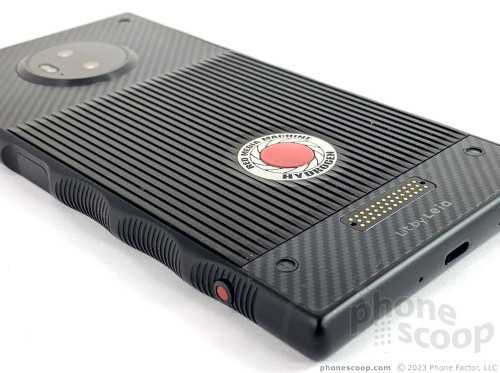
Comments
No messages












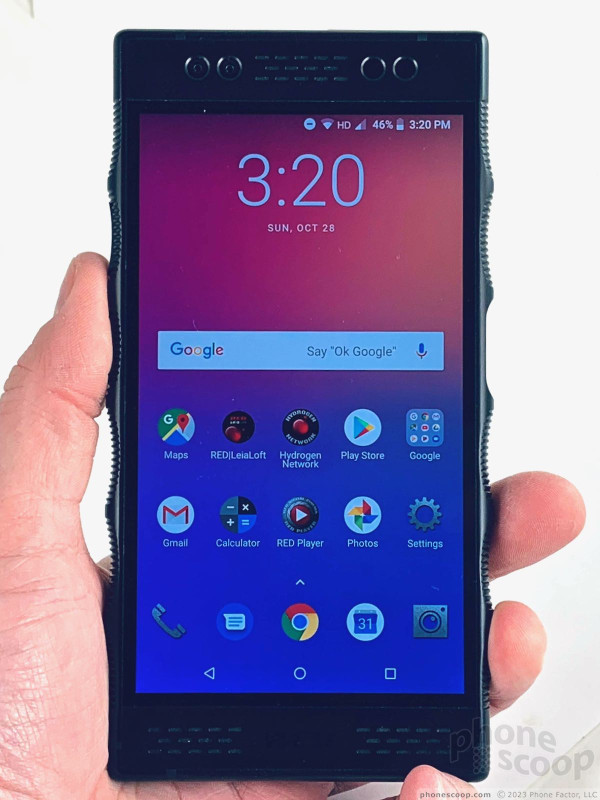







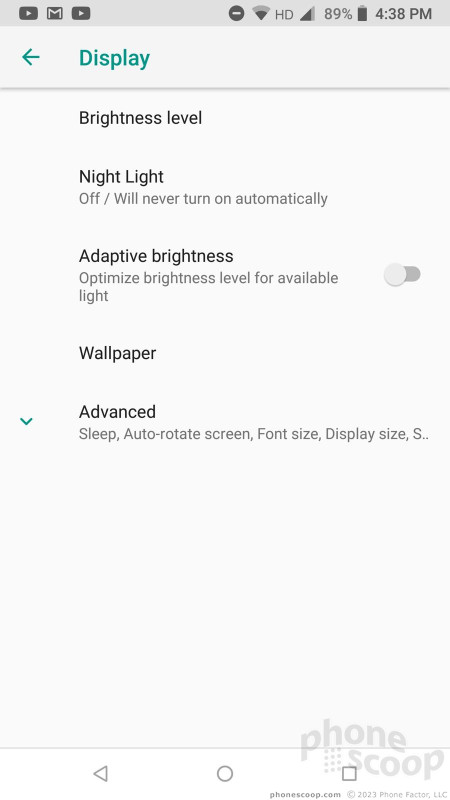




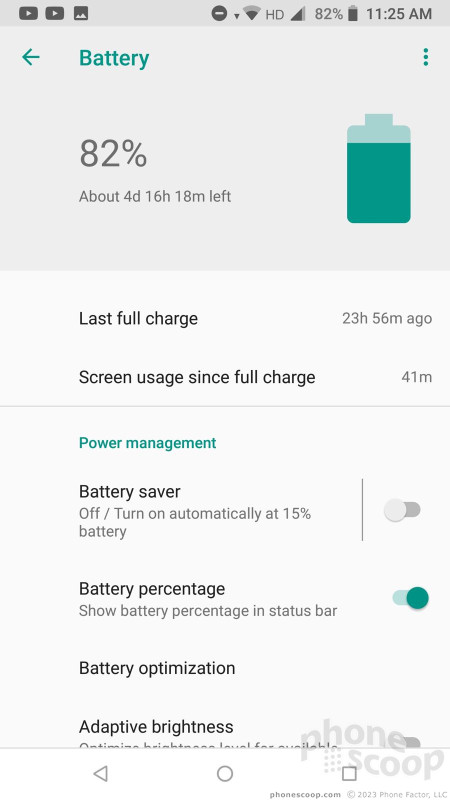




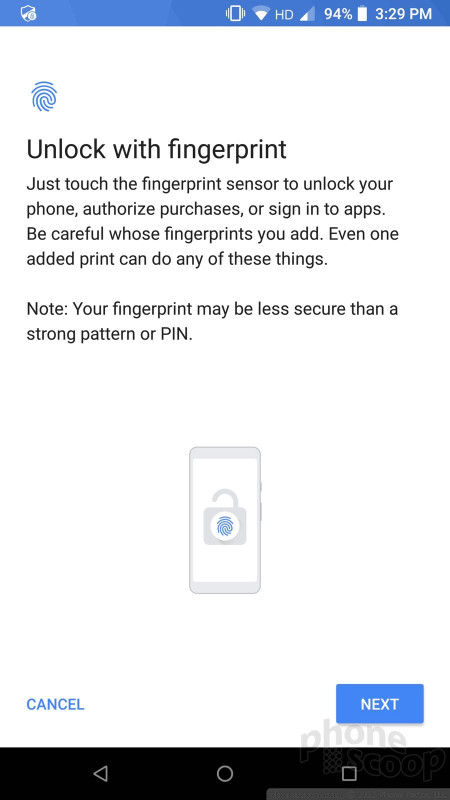







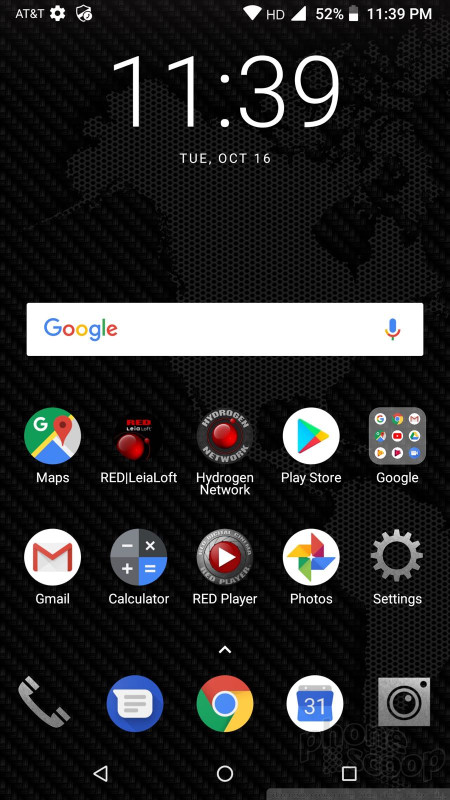





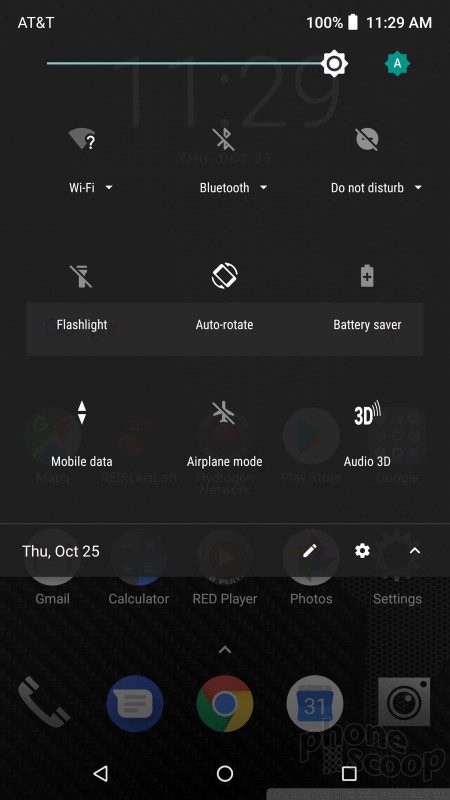


















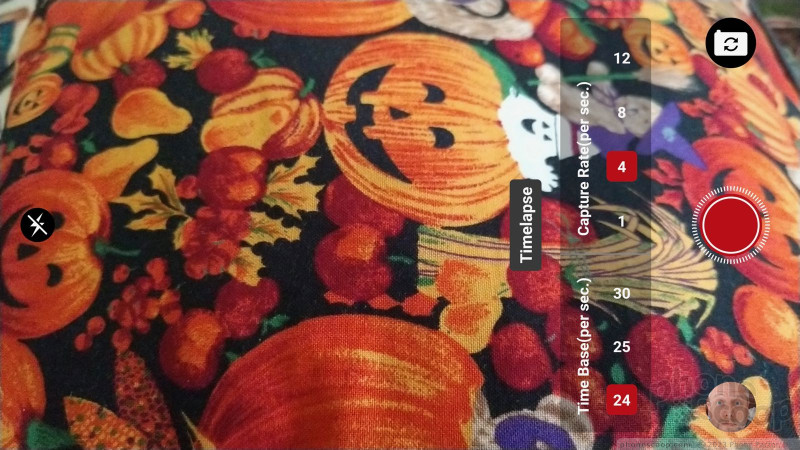












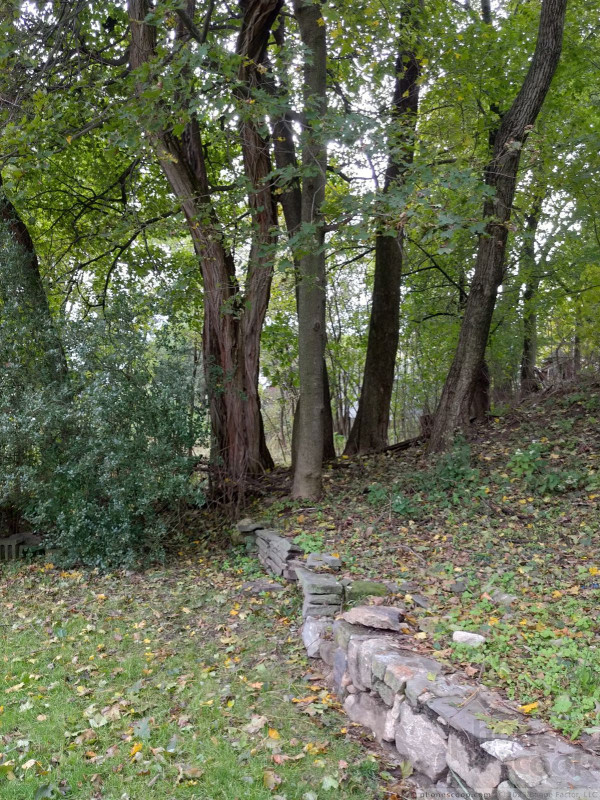
















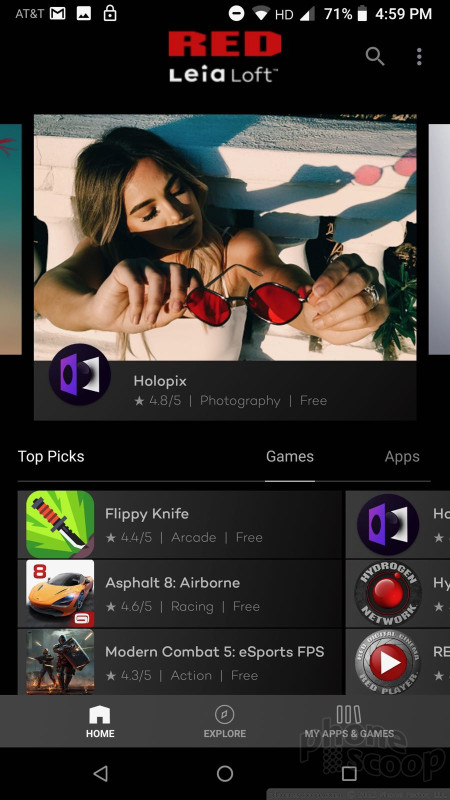





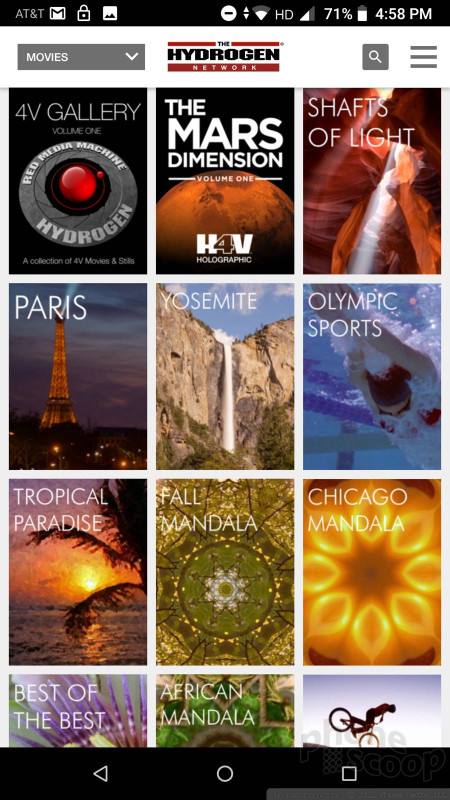





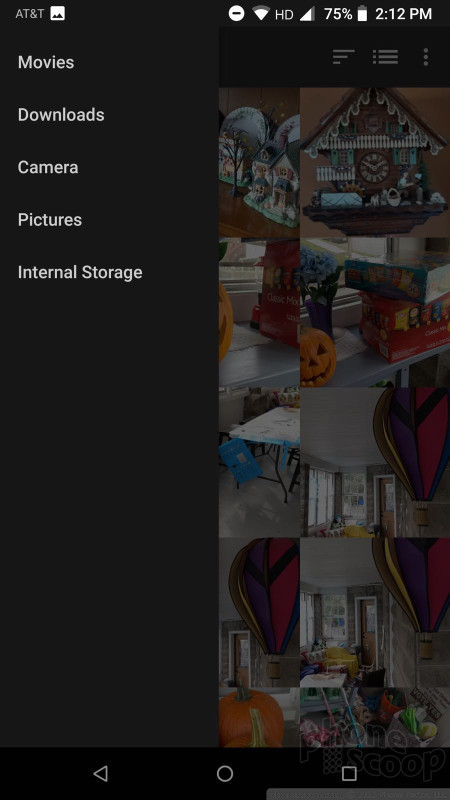





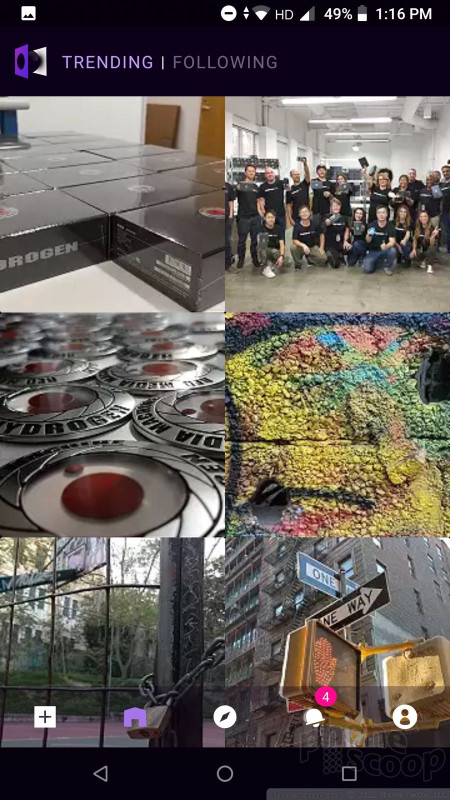






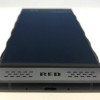 Red Hydrogen with 3D Display Clears the FCC
Red Hydrogen with 3D Display Clears the FCC
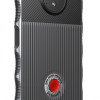 AT&T, Verizon to Sell Red Hydrogen One Starting Nov. 2 for $1,295
AT&T, Verizon to Sell Red Hydrogen One Starting Nov. 2 for $1,295
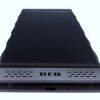 RED Details 3D Content Strategy for Hydrogen One Phone
RED Details 3D Content Strategy for Hydrogen One Phone
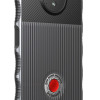 Red Hydrogen One Delayed to the Fall
Red Hydrogen One Delayed to the Fall
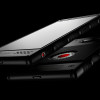 AT&T and Verizon Say They'll Sell the Red Hydrogen One Phone
AT&T and Verizon Say They'll Sell the Red Hydrogen One Phone
 Red Hydrogen One
Red Hydrogen One









